The narrow crack entrance. A visitor needs to put one foot at a time
into the crack to start the journey, but as descending, the crack
opens up and leads to a short steel staircase to enter the canyon.
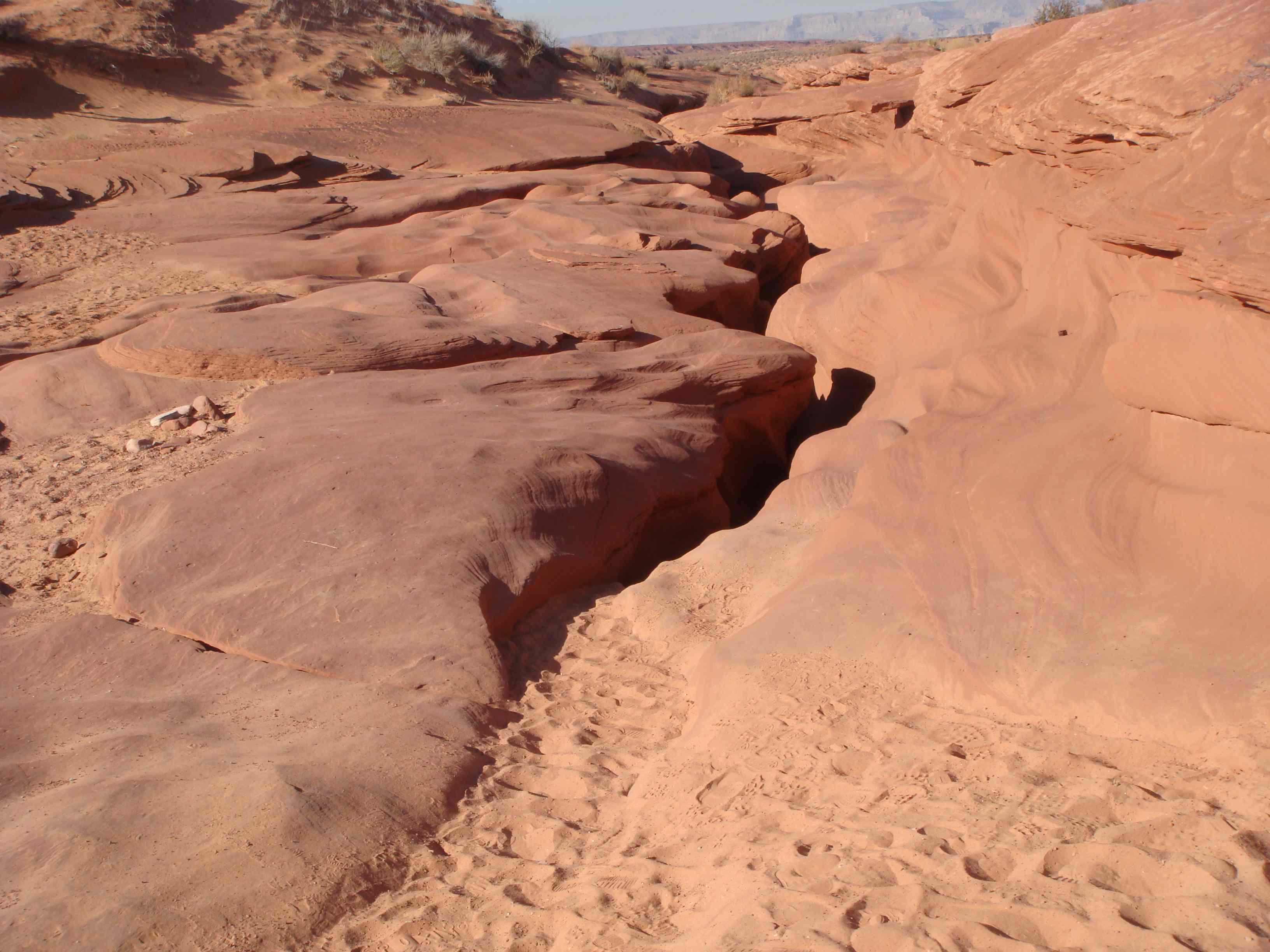
Looking back at the short steel staircase that leads from the crack
entrance down to the floor of Lower Antelope Canyon.
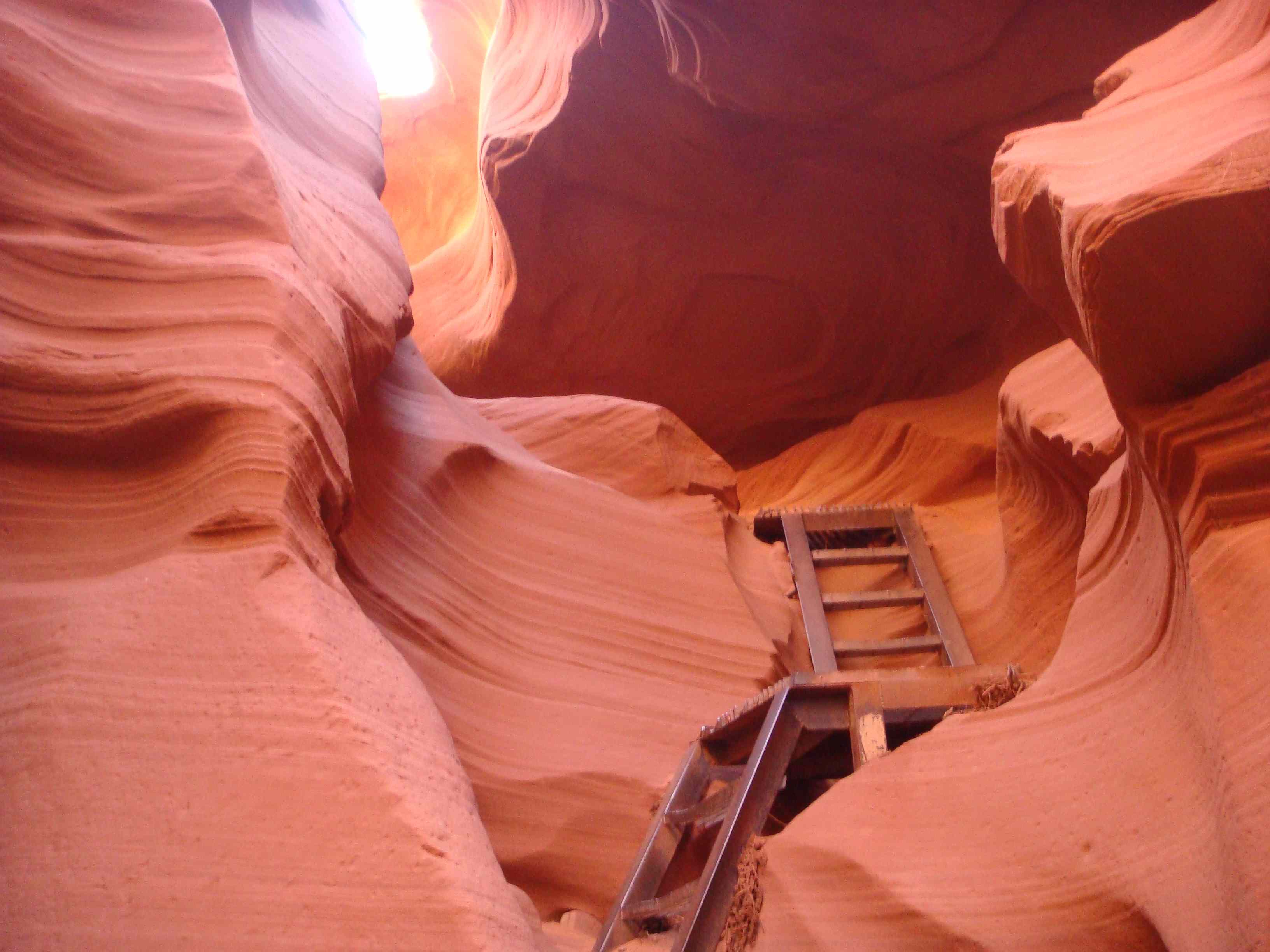
The picture was taken by aiming the camera back at the crack, from
the same position as the previous picture. The head of the short
steel staircase is still visible at the bottom of the picture.
Though there is somewhat of over exposure due to the bright
outside light, the magic of light polarization is already in
play. The scene from the naked eyes is totally different and
much more dull.
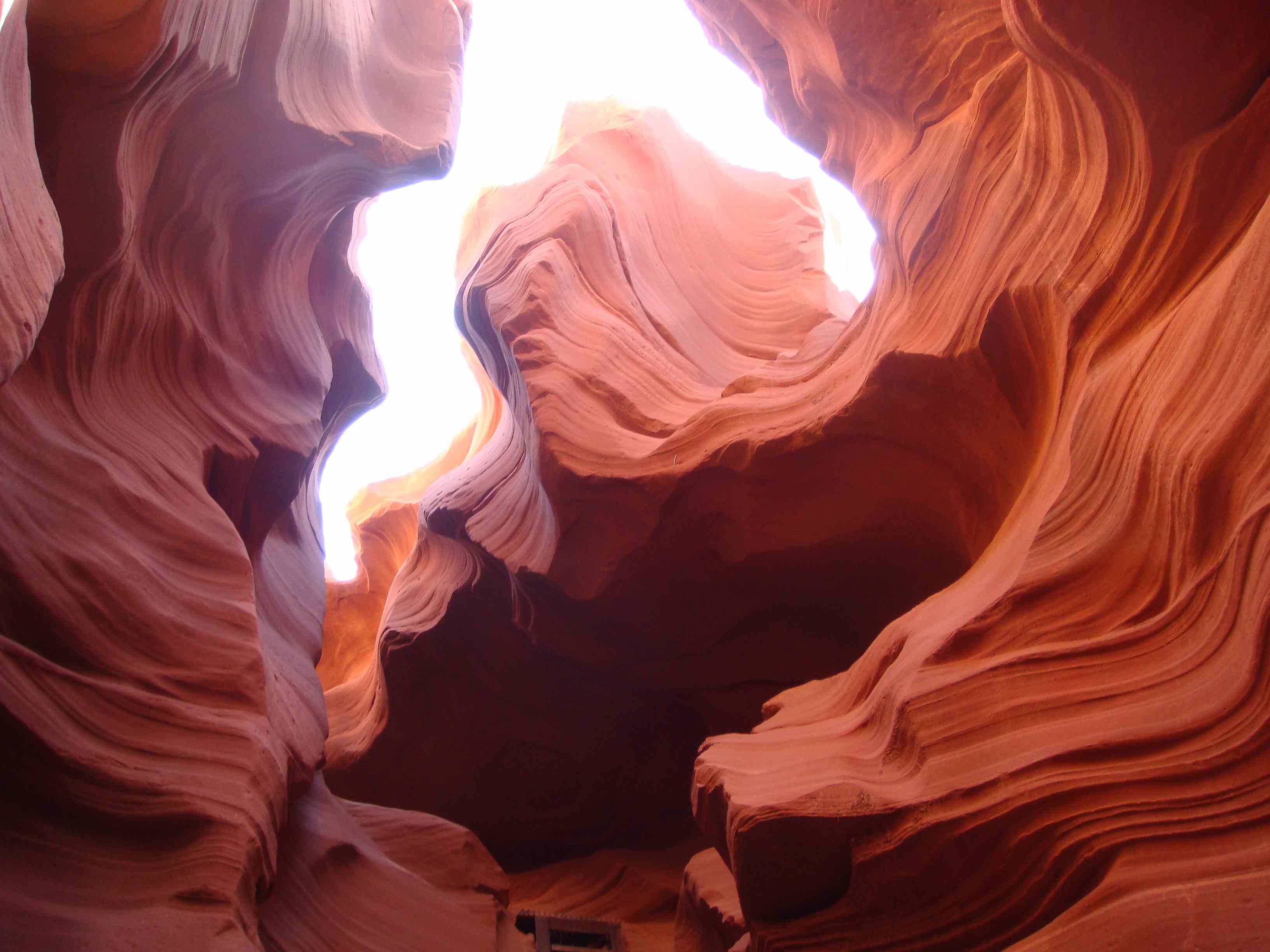
A cork screw structure created by the magic of light polarization.
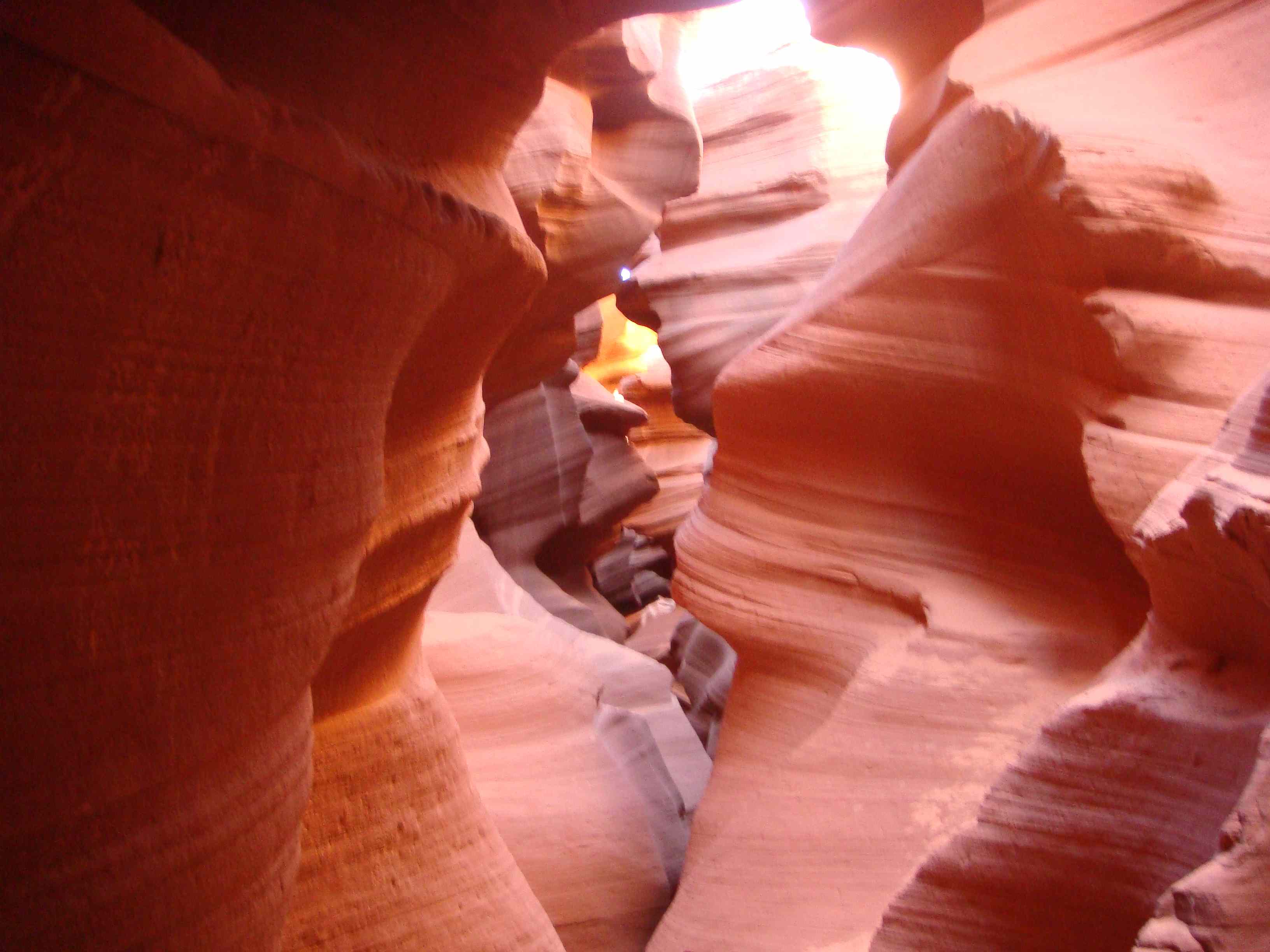
Another reward by aiming the camera at a ceiling window. It is a
judgment call to allow how much over exposure.
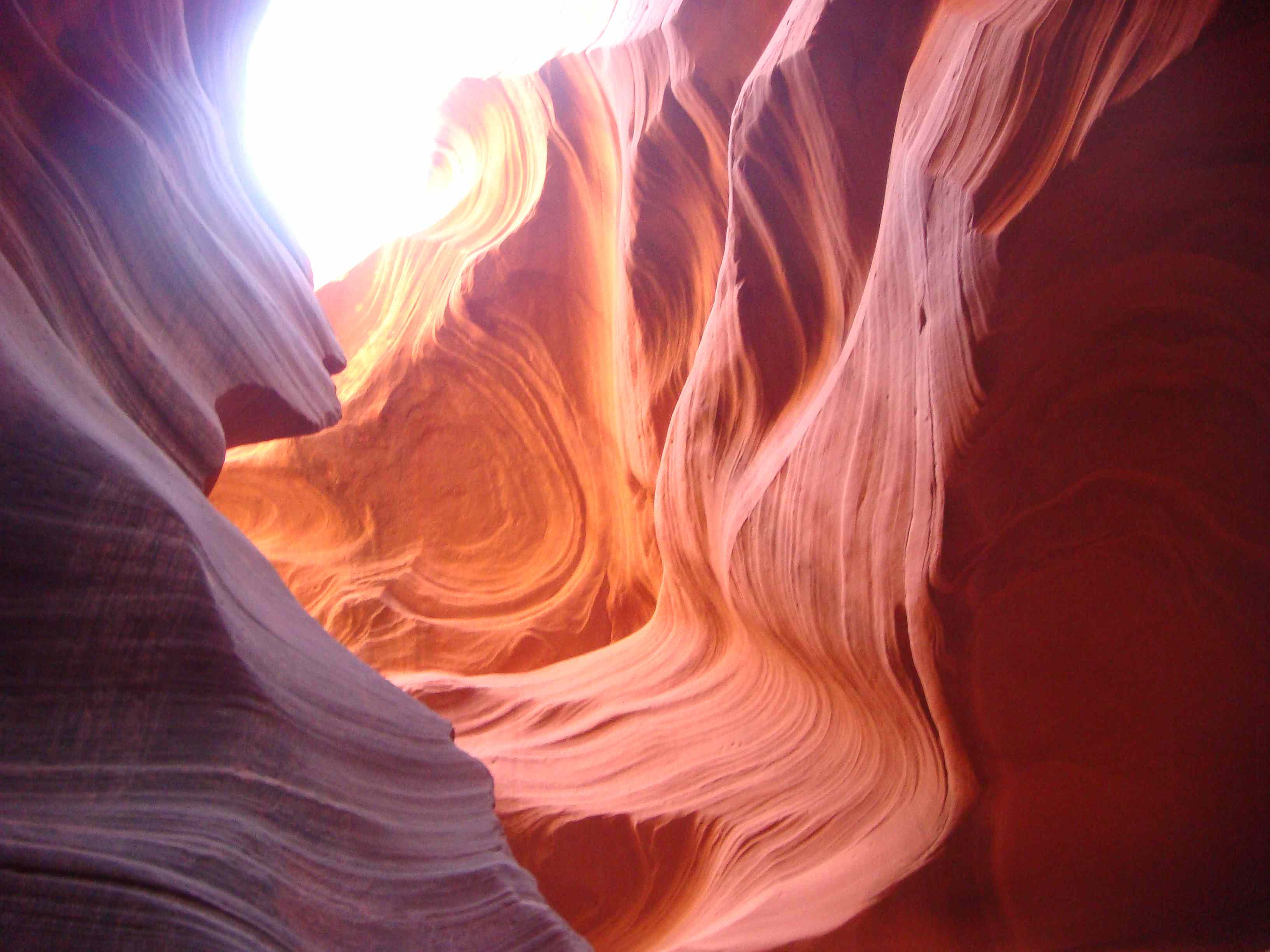
The mouth-like hole in the picture is another illusion from the
magic of light.
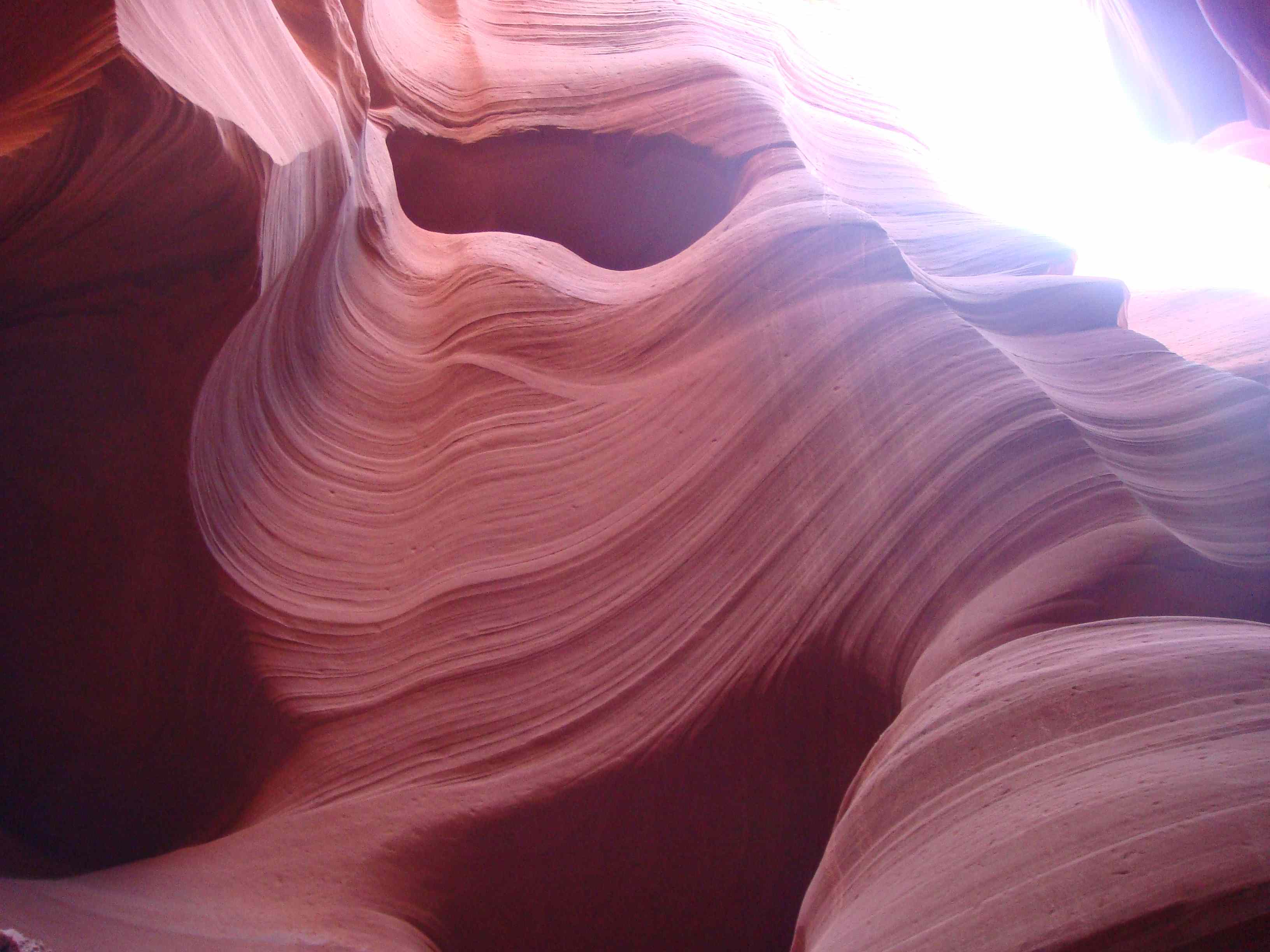
A cork screw nature along the passage of the canyon. The acutal
passage is, of course, not so crazy and dangerous looking.
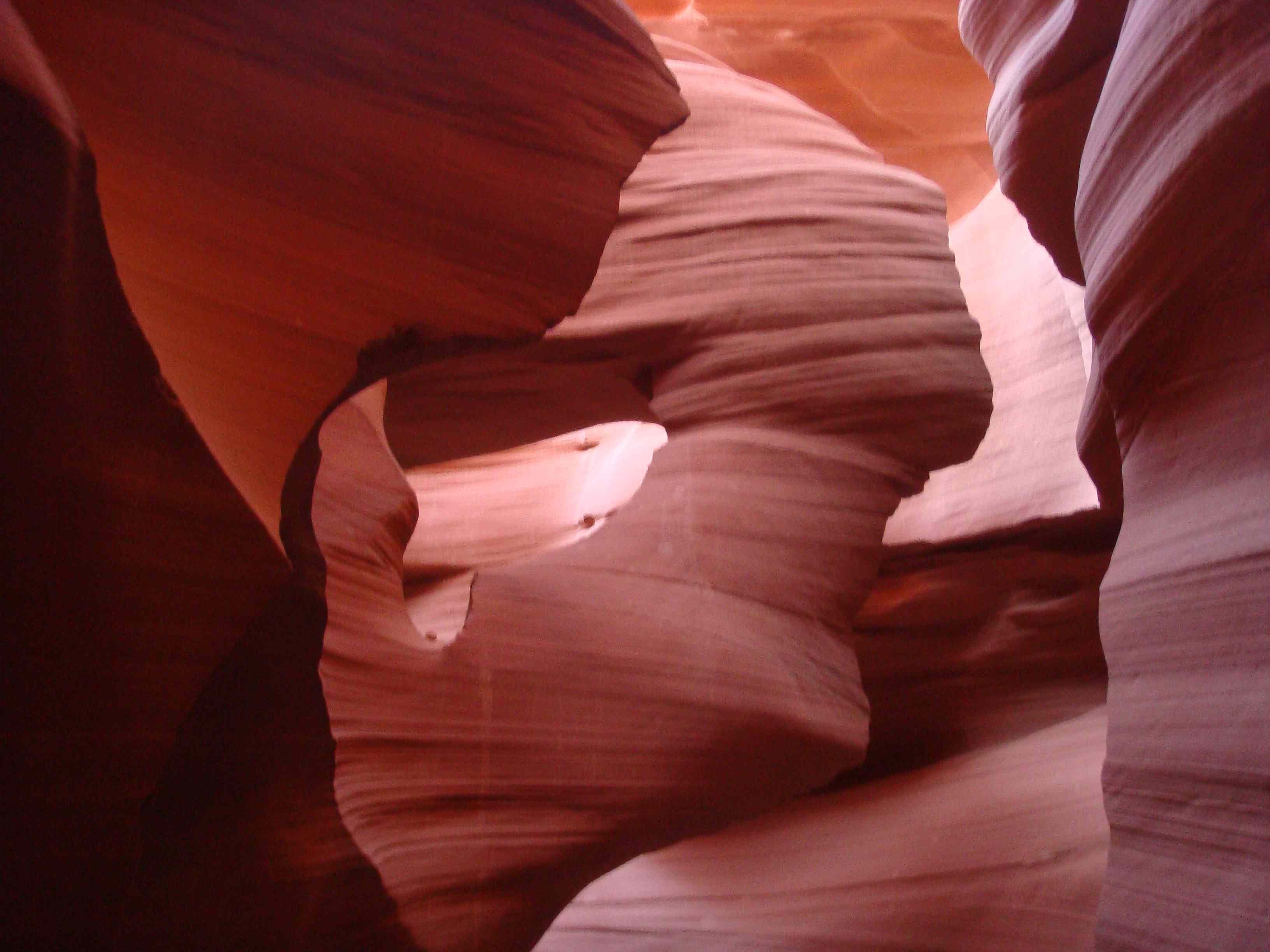
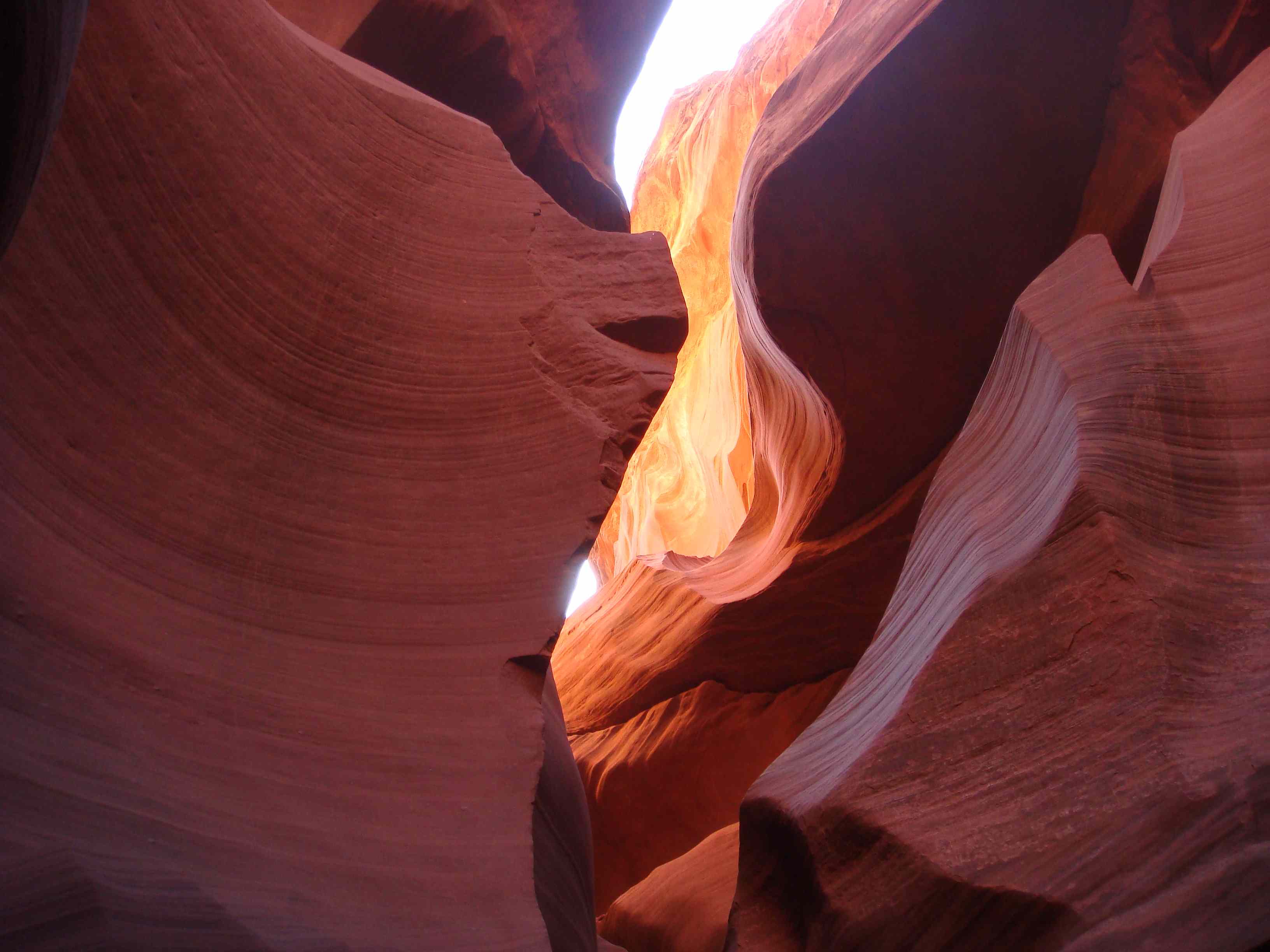
A red-gold flower at the lower portion of the picture. Surely
there is no such delicate sculpture inside the canyon.
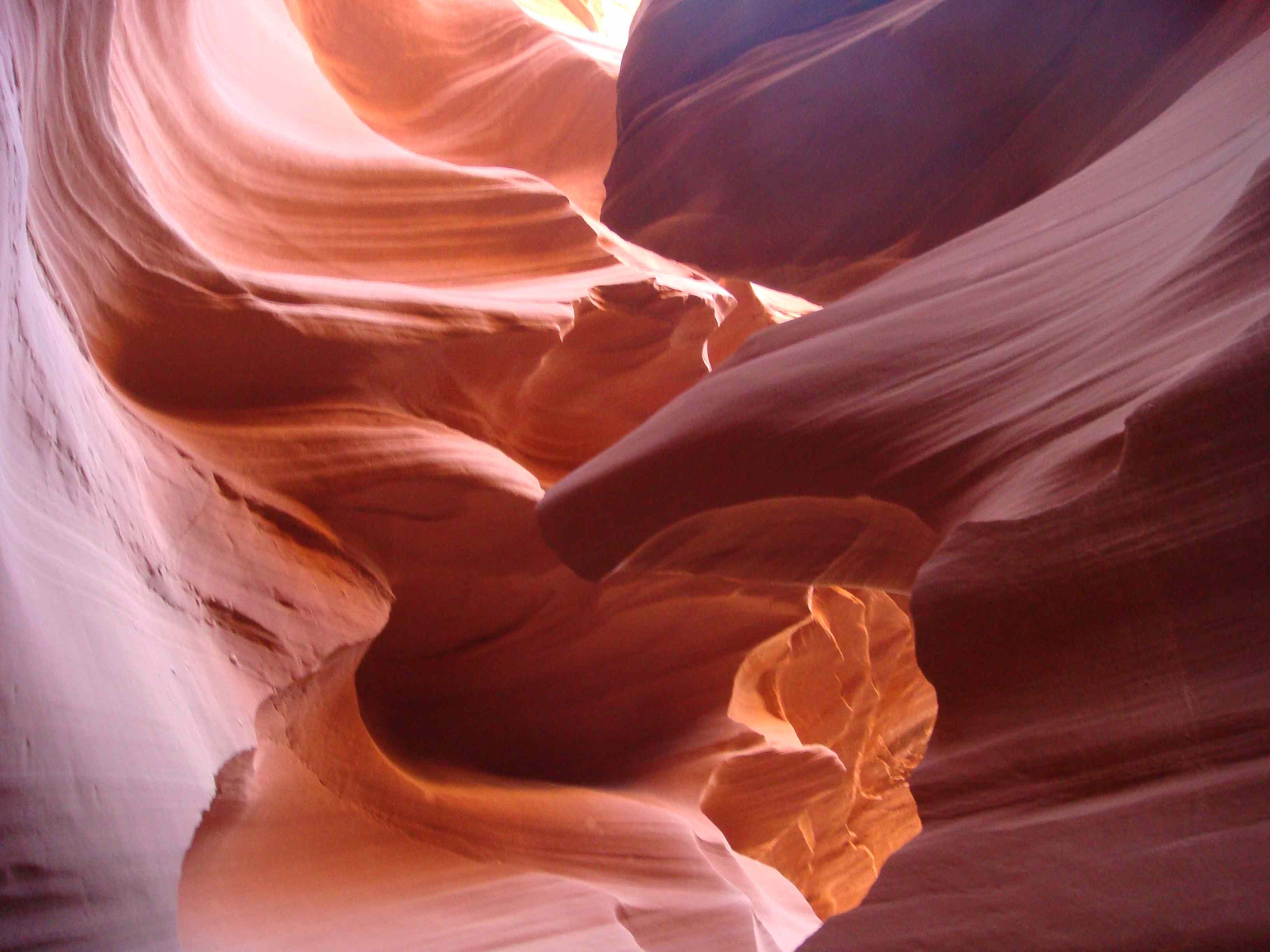
A storm over "Little Monument Valley', a scene from Upper
Antelope Canyon?

A hazardous journey to a "Little Sun"

Monsters along the actual passage. A giant white hand at the
end of a black sleeve, and a giant head of a rabbit down the
road are visible. Those monsters are all coming alive under
the light polarization.

A "Little Badland"?

A precision mechanism. The extrusion at the left is going to
fit into the hole at the right and close off the passage
before the arrival of the fire storm at the background.

The mark of a giant three prong fire claw.

It is a real hole in the rock. A rare structure in the canyon.

Another complicated structure brought out by the light
polarization.

The debris locked between canyon walls is the remnant of
the last big flood. It shows how high the water level was.

The long steel staircase at the end of the passage, leading
to the outside furnace especially in the summer.

The plaque in memory of the victims of the 1997 flood.
